(first posted 8/5/2015) Edsel. Could there possibly be another car in all of history that is more notoriously associated with failure? Famously referred to as “the wrong car at the wrong time” in retrospect, the very full-sized Edsel debuted amidst a sharp economic downturn lasting from mid-1957 to mid-1958. In that time, new car sales in the U.S. had fallen nearly 50% compared to the levels in 1955.
The whole trigger for Edsel’s creation resulted from Ford’s desire for an additional brand to fill the price gaps in its hierarchy, with the hope of retaining more customers under the Ford umbrella as they moved up the ladder to more expensive cars. With the addition of Edsel, as well as making Continental a separate marque positioned above Lincoln, Ford would have a five brand strategy equivalent to GM and Chrysler.
Initially, the idea was to introduce a separate Mercury companion line that was priced above the existing Mercury, similar to Continental was with Lincoln. A concept car, the Mercury XM-800, was paraded around in 1954, and was reportedly ready for production as a 1956. However, the car and idea were rejected by Henry Ford II, who wanted an entirely new car created from scratch.
Development for this new experimental “E-Car” began in 1955, with four model lines planned – two based on the larger Mercury platform and two based on the smaller Ford platform. Ford claimed that its extensive marketing research enabled it to build the perfect car, with broad appeal and universal acceptance, capable of selling on its own merits and thus guaranteeing its success in the market. If only things had gone that smoothly.
You see the whole Edsel venture was flawed from the very beginning. Through all the claimed extensive market research, pre-production Edsel designs were never tested with focus groups of consumers to gauge their opinions, and even Edsel dealers did not catch a glimpse of the car they’d be selling until it arrived on their lots, wrapped in covering until Edsel’s official launch.
The fact that Ford was so overconfident Edsel would be an astounding success and had invested some $400 million into Edsel (roughly, $3.2 billion in 2015) speaks to how conceited (and clueless) Ford was with the whole program. Ford generated a significant amount of hype leading up to the Edsel’s launch, marketing is as something that was completely new and exciting. Promotional material referred to it as “never before a car like it”. Needless to say, buyers were disappointed when they arrived at dealers to find that Edsels were only heavily restyled Fords and Mercurys.
The initial MX-800 concept was conceived with the notion of slotting between Mercury and Lincoln. However, with the Edsel, Ford sought to dually target young, upwardly-mobile professionals “moving up” from both Ford and Mercury, to Mercury and Lincoln, respectively. As a result, Edsel’s pricing structure encompassed that of Mercury, with the Ranger and Pacer priced below Mercury and the Citation and Corsair priced higher. This excluded Mercury’s newly introduced flagship Park Lane that rode on a three-inch longer wheelbase and was also, rather confusingly priced into Lincoln territory.
More so, when equipped with options, Edsels and Mercurys competed directly with each other in terms of price. If Edsel was intended to provide buyers with something to step up into, why would they want to go from Ford to Edsel to Mercury, and then back to Edsel again before moving up to Lincoln? This was hardly the process buyers who cared about “keeping up with the Jones'” wanted.
Additionally, Ford’s marketing of the 1958 Edsels didn’t do much to resolve this confusion either, as promotional materials referred to the Edsel as priced from “just above the lowest to just below the highest”. One brochure compares Edsel to everything from Plymouth to Cadillac. In retrospect, the positioning strategy behind Edsel doesn’t seem so far-fetched, as in today’s world, cars from mainstream and luxury brands seem to overlap more than ever in price and features. But for 1958, this idea was just a little ahead of its time.
Rather quickly, the 1958 Edsels also earned the unfortunate reputation of poor build quality and reliability. With no dedicated assembly plant or even production line, Edsels were assembled on the very same lines as either Fords or Mercurys. Autoworkers were forced to switch to different tooling, components, and mechanics for the lower volume Edsels, which was both challenging and inconvenient.
Quality control comprised of assigning each Edsel that rolled off the assembly line a numbered score. If the average score of all cars produced during the day was of acceptable levels, then every single Edsel was sent out to dealers, regardless of how the build quality of each individual car varied. In some cases, Edsels actually left assembly plants incomplete, with missing or unassembled parts, leaving it up to dealers to complete assembly with given notes of instruction.
Of course, the Edsel’s most infamous flaw (whether or not it was actually its most detrimental flaw) was its styling. Ford’s initial market research showed that Edsel’s target market wanted a car that was easily recognizable from any angle, with a prominent hood and grille, and a jet-age inspired cockpit. At the very least, Ford delivered on those requests, but unfortunately the final product was not so welcomely embraced.
While most of the car’s styling was inoffensive enough, the chosen front fascia with its prominent “impact ring” vertical oval grille was the subject of much disdain and controversy. Combined with the horizontally oriented twin headlights, split lower grilles and bumpers, it was admittedly not the most beautiful face on a car in 1958. But that grille was, and remains to this day, the most talked about feature of the Edsel, besides its catastrophic failure of course.
While more positive comparisons referred to it as a “horsecollar”, it drew less flattering comparisons to “an Oldsmobile sucking a lemon”, or more explicitly, a distinctive part of the female anatomy – not something that Ward and June Cleaver wanted Wally and the Beaver to think of every time they pilled into the family car for a Sunday drive.
Between these and other more minor issues, such as Edsel’s confusing and trouble-prone “Teletouch” pushbutton automatic transmission (as seen on this Corsair), the Edsel failed spectacularly. Combined U.S. and Canadian sales of 1958 models totaled just 68,045 units. All things considered, this was not a bad number, but it was only a fraction of the 200,000 units Ford had projected and actually needed in order to break even on their investment.
Despite a simplified lineup and greatly toned down styling for 1959, Edsel sales dipped to just 47,396, even as the economy was improving and nearly every other automobile brand posted sales gains over 1958. For the 1960 model year, the Edsel’s product range was further trimmed to just one car line and wagon, and cleaner styling did away with the vertical oval grille completely. However, this was merely too little too late for the death-marked Edsel brand, and Ford pulled the plug in November 1959, after just 2,846 completed 1960 models had rolled off assembly lines.
The whole program was a colossal failure for Ford, costing the automaker an estimated $250-350 million in losses (represented in 1958 U.S. dollars), and given Ford’s significant investment and total confidence that it would be an incredible success, Edsel has become synonymous with the word “failure”.
In truth, apart from some build quality issues, the Edsel wasn’t a horrible car. It offered several innovations, among the most powerful V8 engines in its class, and a long list of available features. Nevertheless, it was ill-timed and most people just couldn’t get past that unusual grille. With many Edsels likely seeing the scrapyard within a decade, and low interest during their more formidable years, very few Edsels survive today.
However, this hasn’t stopped a loyal following of collectors from preserving and restoring the small percentage of Edsels left. Given their rarity, the entry costs for Edsel ownership are generally steep, even for examples in need of a full restoration. It’s nice to see that this Corsair’s owner has a lot of enthusiasm for it, although it could benefit from an interior detailing and its exterior isn’t perfect. I also can’t say I agree with all the Edsel stickers that line the dash, and certainly not with the very pickup-like rear window decal, no matter how patriotic it may be.
This gold 1958 Edsel Corsair is one of just 6,355 4-door hardtops produced, and in all honesty, the first one I can recall seeing in person in my adult life. Riding on Mercury’s 124-inch wheelbase which it shared with the costlier Citation, the Corsair was positioned as the next rung down, above the Ford-based 118-inch Pacer and Ranger series. Bermuda, Villager, and Roundup wagons rode on a shorter 116-inch wheelbase shared with other FordMoCo wagons. Total 1958 Corsair series sales (9,987) were positively correlated to its price; excluding wagons, it was the third costliest Edsel and the third best seller.
The Corsair was one of just three of Edsel’s original seven model names to survive into 1959. Now as Edsel’s sole higher-end model, the Corsair lineup was expanded to include a 2-door convertible and a 4-door sedan. Even with the additional body styles, Corsair sales fell, a result of many Edsel dealers closing shop and the public’s general lack of faith in the car.
Personally, I have always fancied myself as somewhat of an Edsel fan. The ’59 models are by far more attractive, and the 1960 models are downright beautiful. Still, there’s something about the 1958 Edsel that I find very appealing, and I have difficulty turning my eyes away from that front end. The ’58 Edsel sure isn’t pretty, but neither are bulldogs, and plenty of people like those.

















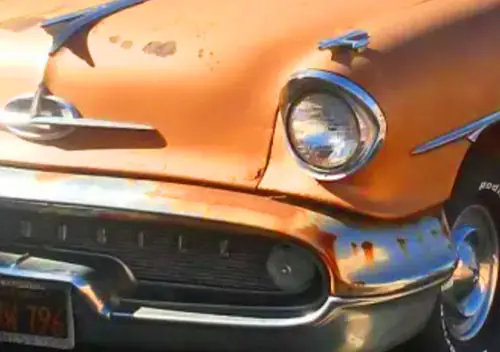
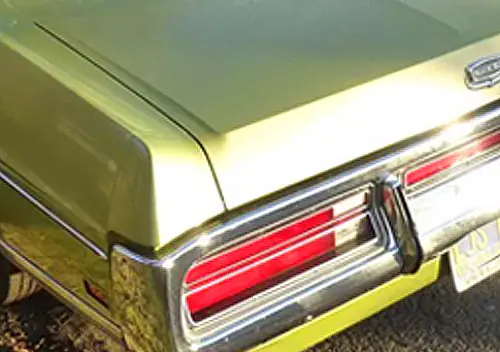
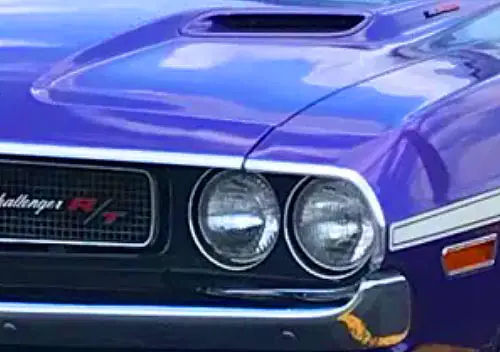

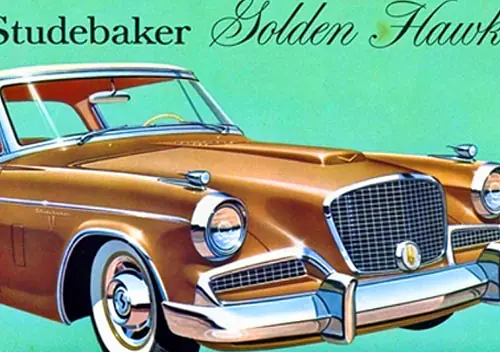


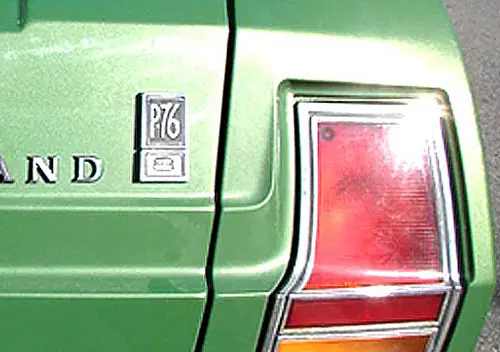
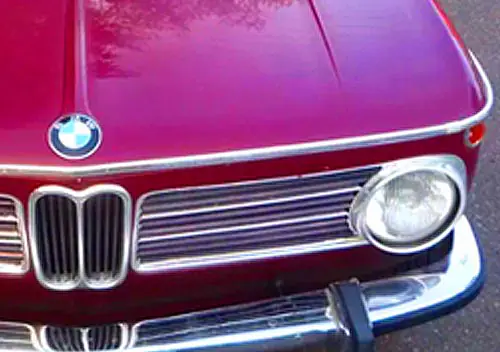
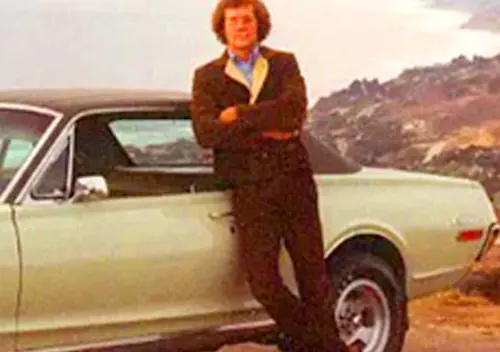


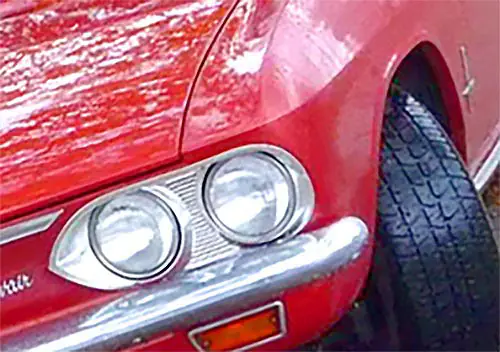


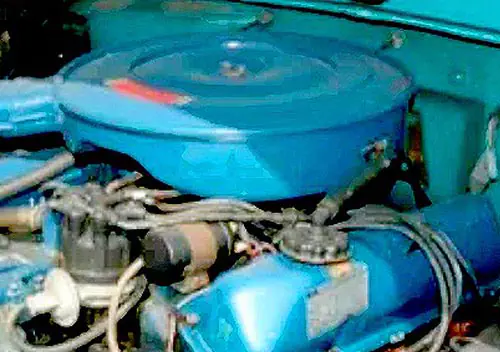



Beautiful looking car, the 1958 Edsel. It’s an unforgivable shame that it didn’t succeed, only lasting until 1960. It’s as if Ford was uncertain what they wanted the Edsel to be, a luxury Lincoln, or a middle car, the Mercury.
The history Edsel is mysterious. There must have been a plan in 1957 to move to the lower cost Ford platform for 1959. It makes one wonder how they intended to keep the premium aura for Edsel given this kind of product planning.
Some good did come out of the failed Edsel program. The Comet was originally intended to be a compact model under the Edsel name, once they decided to pull the plug it became the Mercury Comet. The additional added factory capacity was used wisely to build the very successful Falcon, which eventually spawned the Mustang, Maverick, and Granada.
It would appear that by not sticking with the 58 design for 59, that Ford had decided before the general public did that Edsel was a failure.
Robert McNamara was opposed to the Edsel program from the very beginning. There are stories that, at the car’s introduction, he had made remarks about having plans to “phase out” the Edsel.
As the article notes, the Edsel was supposed to help Ford become GM II. With the Edsel, Ford was trying to institute its own version of the “stair step” divisional structure, and match GM across the board.
The interesting part is that McNamara pushed the introduction of two cars that helped start the disintegration of GM’s divisional structure created by Alfred P. Sloan. Those two cars were the 1957 Fairlane 500 and 1958 four-seat Thunderbird. They proved that a low-price brand could sell cars in the medium-price market, as long as they were the right vehicles.
I recall doing some research once that proved that by 1959, with the new higher priced Ford Galaxie and lower priced Mercuries, Ford and Mercury pretty much squeezed Edsel out of a market entirely. This would fit with McNamara’s wanting to pull the plug on the Edsel (as would dropping to only 2 series’ on a single body for 1959). The car barely made it into the 1960 model year.
The “Sloanian Ladder’ was obsolete in concept and execution after WW2. It worked in the 20s,and early 30s, when incomes were more stratified, and tax rates were low. In the 50s, with the top fed tax rate at 90%, wealthy folks eren’t going to spend 10 times as much for a Caddy, Lincoln or Packard than a Chevy or Ford, as was the case in the 20s.
The other factor was the growth of incomes in the lower and middle of the income strata, as well as the growth of credit. Anyone with a half-way decent job could afford a nicer car.
By the early-mid 50s, Pontiac, Olds and Buick overlapped each other massively. And by 1955, Chevy’s Bel Air V8 and Nomad were also pushing into B-O-P territory.
The only reason GM’s middle divisions kept doing well is because they were established brands and had the styling and features folks wanted. For Ford to think that they could launch a new brand in that very competitive arena was NUTS.
They should have strengthened Mercury, which perpetually under-performed.
As Geeber pointed out, cars like the 4-seat T-Bird and Galaxie, and the Nomad at Chevy, proved that the archaic pricing constraints of the various brands as they once were was now history.
While Ford was launching Edsel, Chrysler was struggling to keep DeSoto viable. Ford should have gotten the message there.
The key to fighting GM was not matching them, but out-foxing them. The Edsel finally made Ford aware of that, at great expense.
Even if the Edsel had not been styled controversially, it would have failed. Folks were led to think that the Edsel was going to be a truly different type of car. When they saw it, why buy something new and untried when GM had the same thing with less risk involved.
The ladder was a concept even in the 20’s. By the late 20’s (take 1928) Buick’s high end was high. But Buick’s low end was in the Oldsmobile and Oakland price range. Pontiac (a companion) was low, but Olds and Oakland were more or less in the same price range.
I think Durant had the basic idea of a ladder when he started GM, but got too involved with buying up too many companies of dubious value.
For sure it would have failed withn that pricing policy. But if I’m allowed a “what if”, the below was ready as styling mock up in 57 (as a Lincoln Continental prototype)… I think coming up in 58 it would have made the rest of the cars selling back then look very dated, just as GM’s offerings did in 59.
In the 1950s, the top federal tax rate of 91% only applied to that amount taxable income over $200,000. In the 50s, there were 24 income brackets, ranging from 20% to the top rate of 91%, not like the 6 or 7 brackets in the current tax code. Earning a few extra dollars then meant that the tax bite on that extra income was not too severe if it put you into a higher bracket, because the tax was always graduated.
The Caddys of the late 20s and early 30s, like the V-12 and V-16 models, cost so much because they were essentially hand-built cars, using separate coachwork by Fleetwood or Fisher Bros. They were not mass-produced autos like the typical Chevy or Ford.
After the war, the Chevies and the Caddys were all built on an assembly line of some sort, and the added comfort and convenience options on the low end Chevy brought it closer in price to the typical Cadillac sedan.
The Sloan ladder worked for as long as it did after the war because people were buying almost everything that was offered. The Depression and the War had created a terrific demand for cars, which lasted until the first Oil Shock in 1973.
You wouldn’t have had that T-Bird or Galaxie if someone (not Robert McNamara) hadn’t figured out that a little pizzazz sold and sold big in the market.
The problems with the Edsel were not that Ford couldn’t compete with B-O-P, but that the car had really weird styling (outre even for ’58), was launched in the midst of a really severe recession, and that NAME.
The biggest failure was the marketing strategy. Simultaniously moving Mercury upmarket and introducing a bridge marque between them and Ford and carrying 2 platforms was not the best strategy to say the least. If they kept Mercury where it had been and then positioned Edsel as a bridge between Mercury and Lincoln based on the Mercury chassis alone would have made more sense. What I have read the styling was liked by alot of people but it was so hyped and then didn’t sell well it became the butt of jokes, as well as the word-of-mouth about the quality. Predicted Pontiac styling I think.
again a failure of marketing.
As a kid of the 50s living in a very small, rural, north Pennsylvania town, I never saw one of these new and have no idea where the nearest dealer was/would have been.
I actually like the styling, preferring the 58 and then the 60….the 59 is just a “watered down” 58 as far as I am concerned.
I think aside from the controversial styling, the marketing of these cars as expensive low priced cars and cheaper high priced cars was a huge mistake. If a target “niche” had been chosen and then the cars marketed as being a sort of “aspirational” brand for Ford OR Mercury buyers, perhaps the story would be different. As it was, it looks like FoMoCo tried to sprint before even learning to walk with the Edsel. 4 series with 18 models AND 5 wagons is almost as big a spread as Ford AND Mercury combined…..ridiculous, or hubris?
BTW, I so wanted to buy a 10 year old 58 Roundup 2 door that was for sale a few blocks from my house. $700 would have bought a sweet 2 door wagon in 1967-68.
My second car was a 59 Citation. Bought in 63, I needed a car for college since the 55 210 Chevy was having Powergllide problems. I poured three cans of STP into the tranny of the Chevy and headed to the Ford dealers lot. He had this Turquoise Edsel 4 door sedan on the lot and it was LOADED! 332 cubes, power steering, power brakes, power windows, seat belts-with 30K miles and minimum wear. He wanted $600.A couple of rows down was a 59 Ford Galaxy, similarly equipped and with $1000 written across the windshield. He must have wanted the Edsel it off the lot, so he gave me $50 for my Chevy and $475 for the Edsel. I drove it for three years with nary a problem until I was T-boned and it went to the crusher! Lots of memories in that beast!
Your pics of the dashboard from the passenger side show a different path that Ford could have taken. The shape of the dash doesn’t belong with the spikey Sputnik stuff; it belongs on a pleasantly plump car.
Which car really succeeded in 1958? The pleasantly plump Rambler American. All the spikey Sputnik stuff went downhill.
Ford had already stolen the original Rambler design for their ’49. Should have stolen it again.
As you have deftly pointed out, there were many reasons for the Edsel’s failure. I actually find the ’58 model the best looking of the Edsels. It’s not even the worst looking car for 1958 IMO. What about the 1958 Packard-bakers, for example?
Coincidentally, I was recently looking at some list put together by a news website of the world’s ugliest cars, and of course the ’58 Edsel was on there…. and they called it a “Ford Edsel”. (Grumble, grumble…) Fortunately their list didn’t also include a “Chrysler Imperial” or a “Cadillac LaSalle”.
That’s one of my pet peeves too. I guess it’s so people don’t confuse them with the “Chrysler” edsels and “gm” edsels.
I’m surprised that the Edsel was so expensive to develop, considering that the car itself was little more than an orthodox Ford/Mercury with different sheetmetal attached.
Where did most of the development money go? Was it the pushbutton transmission? Body dies? Advertisements? Eternal “market studies?”
If I recall correctly, the sum includes the cost of additional plant capacity to build the car. That additional capacity actually came in handy a few years later, when the 1960 Ford Falcon and 1960 1/2 Comet became hits.
Not to mention the Mustang…
If I remember correctly, they built them in Louisville, too. That plant was converted over to truck production. They build the Super Duty pickups there now.
Wasn’t that the same exact make and model Cindy Williams and Ron Howard drove in the movie “American Graffiti”? I’ve always liked the ’58 Edsel’s a lot and always wished they were a major success.
He drove a white ’58 Chevy Impala. I just checked and you are correct, she drove a ’58 Edsel. I don’t recall seeing it driven much in the movie.
http://www.imcdb.org/vehicle_7732-Edsel-Corsair-57A-1958.html
I remember there was a scene where Ron Howard drove his girlfriend’s (Cindy Williams) Edsel on their way to the hop.
Nice edsel. The automatic pushbutton looks sharp too.
Excellent article hitting the major points of the failure of Edsel very well.
As said, its association with failure was likely more a product of the chutzpah of Ford promoting this as revolutionary when it was just a nicer Mercury, and their confidence that they had mastered the market and could not miss with this.
Looking at the 68,000 cars sold, and an argument that sales might have been double that in a better economy, sales were probably okay.
Ford’s repositioning / adding (jacking around with?) all of its brands except for Ford during the 1955 – 1959 period hurt all of them to some extent. Ironic that they were worried about a 5 brand strategy when Pontiac spent the ’50s on the edge of extinction (did Ford’s market masters really have no clue that Pontiac was at risk?) and Desoto, which the Edsel bumped heads with, was really starting to die the year Edsel was introduced, after years of obscurity as a Chrysler trim variant.
My only issue with the styling of the car is the rear end. I think the front looks fine and is distinctive, the general side profile is quite pleasing, the entire package is much more modern than GM’s 1958 products, and the side sculpting and trim is among the nicer 1958 cars. The taillights and rear panel have never worked very well for me.
According to Thomas Bonsall’s book, if you adjusted the original sales projections for the car, which were based on the booming medium-price market of 1955, to reflect the shrunken market of 1958, the Edsel actually came close to meeting its goal.
1955 had to be a tough year to watch as a Ford executive. Buick became the third best selling brand, bringing lots of nice mid-price margins to GM, Chrysler was finally resurgent, and Ford’s Mercury and Lincoln remained mostly lackluster. Suddenly, building a credible mid-price brand must have seemed imperative. 1956 and 1957 weren’t much different.
The ’58 Edsel looks like a pretty good Buick fighter on paper – perhaps just eliminate the bottom end Ranger line, rearrange the pricing a bit so that Pacer, Corsair and Citation compete with Century, Super and Roadmaster, Make Mercury a Pontiac / Olds fighter, Leave Continental as a top Lincoln model, roll out the Edsel as the newest thing in the mid-price field, avoid all the revolutionary smoke and mirrors marketing crap and Ford might have avoided biting off more than it could chew.
“Pontiac spent the ’50s on the edge of extinction (did Ford’s market masters really have no clue that Pontiac was at risk?) ”
This was brought up in the recent article on the ’59 Pontiac, but I have to admit that I had never heard this before, and was surprised by it. Here’s the exact text from that article:
“Pontiac’s existence had always been a bit tenuous. It was by far the youngest of the GM brands, dating to 1926, when it was introduced as a companion brand to Oakland, one of the original GM brands. Pontiac barely survived the Great Depression, and had a rather bumpy ride through the 1940s and into the 1950s. By the middle of the fifties, there was serious consideration on the 14th floor as to whether the Silver Streak division still had a future. Pontiac was losing sales to Buick and Olds from above, and Chevrolet from below. Its rung on the now-rotting Sloanian ladder was precarious.”
I don’t know enough about the 1930s/WWII era to comment, but here are Pontiac’s year-by-year production figures from 1949 to 1959, from the Wikipedia article “U.S. Automobile Production Figures”. (Note: I am not convinced that the numbers in that article are 100% accurate, but I have no reason to believe that the figures quoted here are way off). The production figures are followed by Pontiac’s industry rank, and its rank among the three B-O-P brands:
1949 – 304,819 – 5th – 2nd
1950 – 446,429 – 5th – 2nd
1951 – 370,159 – 5th – 2nd
1952 – 271,373 – 5th – 2nd
1953 – 418,619 – 5th – 2nd
1954 – 287,744 – 6th – 3rd
1955 – 554,090 – 6th – 3rd
1956 – 405,730 – 6th – 3rd
1957 – 334,041 – 6th – 3rd
1958 – 217,303 – 6th – 3rd
1959 – 383,320 – 4th – 1st
In all years through 1953, Pontiac was behind the low-priced three and Buick. In 1954, Oldsmobile passed Pontiac. In 1959, Pontiac passed both Oldsmobile and Buick. Pontiac finished ahead of all non-GM middle-priced makes every year.
These figures don’t look to me like a make on the brink of extinction. Prior to 1958, the only year that really raises my eyebrows is 1954. The ’52 figure is low, but everyone’s sales were artificially depressed that year due to Korean War restrictions. The drop-off from ’55 to ’57 is a bit alarming, but Buick fell even more during the same time frame. Pontiac followed that up with an awful year in ’58, no doubt about it, but everyone except Rambler was hurting due to the recession; Buick and Oldsmobile didn’t do much better (both were also below 300K). Note that Pontiac finished ahead of Oldsmobile every year from 1939 to 1953, and in 1957 (even after that drop over the previous two years) Pontiac was only about 50,000 units behind Olds. Note also that Pontiac finished ahead of Mercury every year in this stretch.
I think it would be fair to call Pontiac the least well-established GM brand, and the one with the least well-defined image. I think it would also be fair to say that Pontiac stuggled a bit during the 1954-58 period, aside from 1955, when almost everyone had a great year. But I am surprised that GM ever seriously considered axing Pontiac, and have to wonder if it was more of an “if things don’t turn around, Pontiac’s long-term future could be in jeopardy” thing.
In any event, I have a very easy time seeing how Ford, especially around the timeframe when the Edsel was being greenlighted (circa 1955), would have had no clue that Pontiac was in trouble. I wouldn’t have, either. If they had, one wonders if they might have better off simply calling GM and offering to take Pontiac off their hands.
“Desoto, which the Edsel bumped heads with, was really starting to die the year Edsel was introduced, after years of obscurity as a Chrysler trim variant.”
Throughout the 1940s and the 1950s, I think DeSoto was clearly the weakest Big Three brand. It probably consistently had the lowest sales of any non-luxury Big Three brand, and it probably had the least well-defined image of any Big Three brand. But whatever it had was always good enough to keep rolling along, and as late as 1957 it would have one of its best years ever. I don’t think people saw DeSoto as really being in trouble until 1958, maybe even 1959. DeSoto was done in because:
–The recession that hit in 1958 was simply that bad. It was the worst economic downturn since 1938. Buick’s 1958 production was just 32% of what it had been in 1955, Pontiac’s was 39%, and Mercury’s was 40%. A smaller brand the size of DeSoto, with all the other problems it had (see below), was just knocked to the mat.
–Chrysler was hit especially had, due to the backlash over the quality problems with its 1957 models, as well as the odd styling its models would wear over the next several years.
–Even beyond the previous item, if you had to be in the situation DeSoto was, and you had to be part of one of the Big Three, you didn’t want it to be Chrysler Corporation. Chrysler was in the midst of a long-term decline (it has lost its status as the nations #2 automaker to Ford in the early ’50s), and had an internal corporate structure where certain divisions had more power than others (you can guess which group Desoto was in). In response to the corporation’s struggles, the various brands began intruding into each other’s market territories. In particular, the two more powerful brands (Dodge and Chrysler) began stepping all over the others.
–This may be an adjunct of the previous bullet, but when DeSoto found itself in trouble, Chrysler corporate seemed to do little to help, either because they lacked the resources or because other more powerful Chrysler brands wanted DeSoto’s territory for themselves. DeSoto’s lineup kept getting smaller every year, withering away to nothing over the course of just a few years.
The good news for Ford and Chrysler: with the decline of the Sloan System, they were probably better off entering a post-1960 world without Edsel and DeSoto. The future was towards selling cars of different shapes and sizes (e.g., Falcon, ’62 Fairlane, Mustang) and covering a wide range of market territory under a single brand (e.g., Thunderbird, LTD), not having as many brands as possible. If Edsel or DeSoto had survived, they probably would have wound up in the ’70s or ’80s selling yet another variation of the models that were already sold in very similar form by Ford/Mercury and Plymouth/Dodge, and would have eventually met the same fate that Plymouth, Oldsmobile, Pontiac and Mercury did.
You’ve presented a much more scholarly line of thinking than mine. I spot checked your 1956 Pontiac numbers against the Standard Catalog published in the 1980s, and your numbers agree.
There is some conventional wisdom that Pontiac was considered a bit fuddy duddy and mostly a re-trimmed Chevy by the public during the early post war period. The introduction of a V-8 in 1955 was the first major step forward.
The idea that Pontiac managers were told to “fix-it” has been around for a while, but you make me wonder if a few guys that eventually had some interest in having the world see it that way may have been behind that. I’ve never read John DeLorean’s book so I don’t know if that may be one source. Interestingly, the Knudsen, Estes, DeLorean trio appears to have been in place in 1956, and presided over a sales free fall. They may indeed have been told to “fix-it.”
A CC investigation of Pontiac’s place in the world in the 1950’s would be interesting.
DeSoto had its third best year in 1957 with about 134,000 units. Not a terrible number for a car that was mostly from the Mopar parts bin with some unique pieces. But, with all the infighting at Chrysler in that period, a car that represented little imagination and a potential to perhaps easily shift that volume within the company had to be a tempting target for some executives.
Still, the 1958 DeSoto suffered at the hands of the public as well. My not exactly triple checked numbers show that the ’57 and ’58 DeSoto were each sold in 18 variants, and the ’58 fell to under 50,000 units with seven variants selling under 1000 units each. With total sales below the Edsel, anybody at Chrysler with a desire to shrink or kill the DeSoto certainly had some easy comments to make in planning meetings.
The notion that Pontiac was on the ropes in the 1950’s just doesn’t wash. Ranked between 4th and 6th in overall industry sales in all years. Always outsold Mercury, let alone Desoto. The only two bad years here are ’54 and ’58. In ’54 Pontiac was still stuck with the old straight 8, when all the talk was about the new V-8 the ’55 would have. Potential ’54 buyers simply waited until ’55 to get the V-8, resulting in a record big year. In ’58 the deep recession hurt everyone just about equally. Pontiac fared no worse than others.
Of course by 1959 Bunkie, John Z. and Pete Estes were on the scene and the wide tracks would soon start flying out of the showroom. What a run this trio would produce in the next decade.
I think nostalgia has been good for Edsel. Granted 1958 was not a great year for well-styled full-sized cars, especially given the over chromed examples from GM. But within the context of the time, from the minute Edsel was released it was thought to be unattractive – even as a kid, I remember it well. For a brand new model, the styling was far from the up-to-the-minute, jet age, low-slung competition from Chrysler. Instead, Edsel looked too upright and dowdy, with many mixed styling messages going on, especially in front.
Add in a serious recession and the impending failure of direct competition in the medium price field such as DeSoto, quality issues, etc. – the stink of failure arose so quickly it is hard to comprehend today. Who wants to buy a car that becomes the immediate butt of jokes of TV comedians and those in barbershop chairs?
Fortunately at the same time Ford could bask in the glow of the new four-seat Thunderbird, a truly innovative concept of the aspirational personal luxury car and Motor Trend Car of the Year for 1958. I think it was a good move to wipe out Edsel and move on quickly to what became a full range of Fords for the 60’s, with the LTD becoming the logical filler for a medium-priced image car in that line-up.
I remember my father coming home from work around the time the Edsel was introduced, saying that he had seen (an actual car? an illustration of one?) in town, with a roll of toilet paper hanging beside the grille!
The Edsel gives we Americans an opportunity to Celebrate Failure, lest Britons have all the fun.
I figure it must gall those at Ford that, despite the Vega and the Citation, the watchword for failure is still “Edsel”.
I guess that’s what happens when your entire line fails, and not just a model or two.
The Vega also had to share its notoriety with the Pinto and Gremlin.
And it at least looked good!
Saturn. A bigger failure after the patriotic initial success. Meaning people bought the first Saturns because they wanted to believe the US had finally created a genuine world class small car.
It hadn’t. Contemporary Civics were still much better.
Actually, the Saturn failure would have be less so had it failed as quickly as Edsel. Many credit GM’s Saturn folly w/ the eventual collapse of the neglected Oldsmobile altho that probably would have happened eventually, just later. Saturn certainly weakened GM in so many ways.
btw, to my eye the 1958 is the best-looking, iconic Edsel. The 1959 looks cheap and decontented in comparison. In 1957 my grandfather needed to replace his bathtub Hudson and the dealer had taken on Edsel so GF bought a new 1958 fully loaded Citation, turquoise and white. He kept it two years and went Chrysler after one wheel came off the Citation while driving it. The joke was that he saw the wheel passing him on the left when he slowed the Edsel down.
The 1960 is the worst because it clearly is a Ford Galaxy with a cheapened 1959 Pontiac ripoff grill and totally bizarre rear taillights. The 1960 Galaxy was considered a Ford styling failure too which it quickly remedied for 1961.
http://www.oldcarbrochures.com/static/NA/Pontiac/1959%20Pontiac/1959%20Pontiac.html
https://www.curbsideclassic.com/curbside-classics-american/curbside-classic-1960-ford-starliner-haste-makes-waste/
Does anyone have the numbers on GM’s Saturn failure vis a vis Ford’s Edsel? I suspect the Edsel was the lesser absolute failure despite the legend.
I’ve never seen an actual figure for how much GM lost on the Saturn venture. I’ve read that it lost money every year but one, but I’ve never seen just how much it lost.
GM never ‘fessed up” to what the whole Saturn adventure cost. It wasn’t just the operating losses yearl (except one); there were other expenses not accounted for. I’ve seen credible guesstimates of up to $10 billion. It was a very expensive mistake, and contributed materially to GM’s cash burn during this era that led to their bankruptcy. A very deadly sin.
The bailout revealed that GM’s much-ballyhooed Finance Department wasn’t really all that great, so it’s entirely possible that even GM really didn’t know how much it had lost on the entire Saturn venture.
If GM withheld that from their Annual Report, then their accounting firm deceived shareholders. How can accounting firms be impartial in their auditing when they’re paid by those whom they report on? I have yet to hear a satisfactory answer to this.
Neil, my first class in Accounting 101 on the very first day I was told that all businesses keep more than 1 set of books. That was in 1969.
Speaking from the other side of the pond, the styling looks no worse or better than many contemporaries, so you have to suspect the pricing, marketing and reliability.
I’d still have one though!
Agreed. I’d rather have an Edsel that some other ’58s I could (but won’t) name.
I named the worst offenders,sorry to any owners
Roger, I’m also on the other side of the pond and I beg to differ. What (I think) they were trying to do with the grill is to have a bit of a European air about it – an American variation on the Bentley/MB/Jaguar theme. This could have worked with either a wider, shallower grill or with headlights sitting inside the wings (closer to the grill) and not at their extremities. If you consider European cars following the same theme as the Edsel (“Chinese eyes” Continental, Lagonda Rapide) you have to accept those were no things of beauty either. Once you add to that the rest of the elements, which were no more than a collection of Ford/Mercury ones and the rather tall and awckward aspect of the styling it just does not add up. Like I noted above, Lincoln had a much more cohesive prototype in 1957 which might have been useful as the basic Edsel form; had Ford come up with THAT in 1958 and with the right price policy it might have been the success the LTD was 10 years later.
Lagonda Rapide
Continental. See what I mean?
Count me as a fan. There were a lot of worse looking(and more expensive) cars on sale in 58.The ostentatious Pontiac,Oldsmobile and Buick.The much more expensive but oddly styled Imperial and the monstrous Lincoln(which the Edsel outsold 4 to 1) are some that spring to mind.
The 60 Edsel is a beauty, by then the damage was done and it was too late to save them.
The Edsel had two wheelbases, 118 at the low priced end and 124 at the higher priced end. Mercury had a 122 inch wheelbase with the new model 125. However, the Ford 500 was also 118. The low priced Ford was 116. So as Brendan points out, one could move up from low end Ford to Ford 500, then an Edsel, then a Mercury, then Edsel again, finally the Parklane Mercury before moving up to Lincoln.
Chevrolet’s were 117.5 in 1958, moving up from 115. My guess is that people were confused by the Edsel, and may have expected more from Fords prelaunch advertising. Sales are disappointing and the comics pickup on this to make jokes. With this backdrop, moving into the 59 model year, people who were not too sure about Edsel, probably bought Mercury or ?.
Obviously Ford wanted Mercury to move more into Buick/Oldsmobile class, while the Edsel was more of a Pontiac I think.
You’ve hit on one of the several reasons the Edsel failed. FMC never knew exactly where this fit in their model line-up, so how could the customer?
People knew what they were getting in a Buick, Olds, Dodge and even DeSoto, but were puzzled by the different Edsel wheelbases and models, whose prices spanned several brands. This not only hurt Edsel but caused a similar identity crisis for Mercury, which was moved upmarket (or was it?)
I just ran across this 1960 Edsel prototype. To be fair, this isn’t the real prototype, but rather a replica built from a photo of the original, which is presumably destroyed. So it may not be original, but it’s certainly… anatomically correct!
Very interesting! I think prefer either the ’58 or the production ’60 model better though.
I’m thinking this is someone’s joke. Way too much of a man’s ………. in front of a woman’s…………!
Anatomically correct indeed.
No, somebody actually took the time to re-create, in metal, one of the final clays. I remember seeing pictures of that car (in clay) in an old Special Interest Autos.
That’s something I wish other collectors would do – take the period car and modify it to one of the designs that didn’t pass the final decision stage. It’d sure make vintage car shows interesting.
+1
That would be cool, way better than a cookie cutter restomod
well it’s been done sort of. Someone took a boat tail Buick Riv and turned it into a Tucker Torpedo concept that was never produced. I guess it would be too much to ask to create one using an actual Tucker.
That somebody was a gentleman by the name of Charlie Wells from Medina Ohio. Met him some years back (he’s deceased) a very nice man with a very strong love for the Edsel. He dad a large barn on his property with a HUGE green Edsel Big “E” painted on it 🙂 .
It makes me wonder if the Ford designer wasn’t playing a practical joke. In theory, by this time, the comment about the ’58 having female parts had to be well established. Designing a male counterpart would seem to be quite the joke if it weren’t for the fact that most folks at Ford probably weren’t in a laughing mood. The pundits and public would have had a field day if this front end had been produced. An initial production run to put one unsold unit in every Ford dealership would have been plenty.
What is decidedly scary is that after typing the comment above, my speakers came to life with a couple discussing KY jelly products. I scrolled up, and the ad in the Medianet space was for KY.
I can imagine the jokes…
What do you get when a 1958 and 1960 Edsels smash into each other? Baby Edsels!
Or else the ’60 is giving the “middle finger salute” to the car in front of it.
Edsel always seemed to be too much like Mercury to be worth the expense of creating a new line of Fords. A friend’s Mom had a ’58 Ranger that we 13 year old kids were shuffled around in. This was in the late ’60’s. I was always interested in the strange drum type speedometer. I sometime wonder if someone in marketing at the time thought, well if Cadillac can have front bumpers that resemble a woman’s breast, why don’t we one up that and have a grille that resembles a woman’s… From the jokes of the time, people seemed to get it, but it just was a big mistake to go with such a radical idea that really didn’t flow at all well with the rest of the body lines. Great write up.
There are several Edsels on the road locally somebody likes them enough to import them we didnt get em new and NZ got plenty of 58 Fords the gold flash model was and is quite popular.
Ford tried the Corsair name out again down under rebadging the dreary Nissan Pintara it flopped too even the oddball UK V4 Corsair faired better.
To give you an idea of the cultural level of failure from back in those times, I offer the first “dirty” joke I ever heard at age 11 (1961).
Q: What’s the definition of a loser?
A. A pregnant prostitute driving an Edsel with a Nixon bumper sticker.
LOL triple whammy
My dad updated this to “Goldwater bumper sticker” in his telling, so it did stay around for a while. (I had to ask what an Edsel was and who Goldwater was, given that this was in the late ’70s when I would have been 9-10.)
Somewhere I have a photo of my son and I kneeling by the rear bumper of a 58 Edsel that wears a Nixon bumper sticker.
The Edsel was the car that really proved that Ford could not go mano a mano against GM and win. The Edsel was an attempt to compete on GM’s playing field. The only way Ford would find any success was in breaking GM’s rules (58 Thunderbird, Mustang, LTD) instead of playing by them.
This Corsair 4 door hardtop is a very rare find. Most Edsels I have seen have been the smaller/cheaper Ranger and Pacer models. The big Edsel did not sell nearly so well.
Other than the controversial front end, I have always found the Edsel (especially the big one) to be a conservatively attractive 1958 American car. It certainly did not live up to all of the hype that Ford gave it, especially after the car-buying public had just experienced Chrysler’s ground-breaking Forward Look for 1957, a look that really was revolutionary.
Actually I find the Mercury-bodied Edsel more attractive than the actual Mercury!
You know, you’re exactly right! Practically all of Ford’s big winners came from finding niches where GM was absent and exploiting them. You mentioned three great examples. I’ll add the Explorer, which dominated its class for years and GM could never touch with Blazer. Ford also gave wagons special attention with innovations as the 3 way tailgate and dual facing rear seats that were winners.
“Rather quickly, the 1958 Edsels also earned the unfortunate reputation of poor build quality and reliability. With no dedicated assembly plant or even production line, Edsels were assembled on the very same lines as either Fords or Mercurys. Autoworkers were forced to switch to different tooling, components, and mechanics for the lower volume Edsels, which was both challenging and inconvenient.”
I had not known that before. They put quite a challenge to the guys in the factories. It’s one thing to build trim and option variants on a line, quite another to deal with virtually all different wheelbases, engine families, sheet metal, bumpers, lighting, etc.
One would have thought that with freshly added capacity they could have found a way to do a dedicated line.
In doing my research, I recall reading somewhere that something like “every 61st car on the assembly line was an Edsel”. Not sure if it’s true, but considering Ford produced nearly 1 million Fords for 1958 and that Edsels were produced at 6 different plants, it would appear have some truth behind it. Switching all that tooling and components just for 1 out of 61 cars must have been a real pain, and with such sporadic practice assembling each Edsel, no wonder some weren’t put together right.
Much Edsel production was farmed out to Ford and Mercury plants, and not only was the Edsel an unwelcome guest, the line was speeded up a bit so that an extra car could be produced every hour–rather than 60 cars per hour, it would be 61.
I would hope that was just the average, and Edsels came down the line in batches so that there would be a whole shift of Edsels or something like that.
Looking at the black and white picture in this feature it appears the cars behind the Edsel in the foreground are other Edesel models
It was definitely produced in batches, that stat is another case of stats lying and, well, you know the rest 🙂 .
I would assume batches as well, but even then, that had to be a lot of switching around compared to the average auto assembly line.
Edsels were worked-in between Fords or Mercuries, typically in the last 10 minutes of every hour of every shift. If demand for Edsels was slack (go figure), Fords/Mercuries would still be interleaved with them during the “Edsel build period.”
The main issue was that the lines’ quotas of Fords/Mercuries weren’t changed once responsibility for Edsels was added; the workers thus resented having to build Edsels “for free” — and performed in slapdash fashion.
I was still in elementary school when the Edsel came out. I remember my dad commenting on what a terrible name for a car “Edsel” and wouldn’t consider buying a car with such an odd name. We Americans have an easier time dropping car brands than accepting new ones. I can’t think of a new brand being introduced in the recent past except for the separate Ram division for Dodge’s truck line.
Rebranding Dodge pickups as “Ram” wasn’t a huge leap, since the affected models were all called “Ram…something” anyhow. A pointless change IMO, but Sergio seems to like having lots of brands with a few models in each.
Toyota’s Scion brand is a fairly recent addition (2002). Before that came Hummer, Saturn, Asüna, Merkur, Lexus, Infiniti and Acura. Those are the ones I can remember as far back as the 1980’s.
Also Geo (the grab-bag for GM’s imports) and Nissan as sucesssor to Datsun. And don’t forget Maybach, though it was sort of a resurrection of an old brand M-B had held onto.
Geo, right. I knew I was forgetting another similar brand when I wrote Asüna.
I’d be willing to bet that Scion has been at the very least a major drag on Toyota if not an absolute monetary bust. Probably the only thing in Scion’s favor is that it doesn’t have to rely on stand-alone dealers.
It’s probably fairly low-cost for Toyota as brands go. None of the Scion models are specific to Scion, but are rebranded vehicles that are also sold in other markets. Wikipedia says:
tC = Toyota Avensis (Europe)
xB = Toyota Corolla Rumion (Japan)
iQ = Toyota iQ (Japan and Europe)
xD = Toyota ist (Japan)
FR-S = Toyota GT86/FT86, Subaru BRZ
iA = Toyota Yaris, Mazda 2
iM = Toyota Auris
Reads like an elemental chart.
Wiki is wrong as usual the XB is the Toyota BB in Japan.
A great uncle of mine bought two Edsel’s brand new, so I’m guessing it was a ’58 and ’60 as he traded every couple of years.
The whole Edsel story is fascinating, sad, and entertaining. Great article, Brendan.
It seems that part of the reason for for Edsel’s failure is ascribed to advertising that kept the design of the car a secret while suggesting great things, and another reason for failure is ascribed to the car having a weird nose. The thing that completes the recipe is a weird name.
I have a theory that corporations repeat disastrous ideas about once every other generation – that is when all the old guys who lived through the fiasco the first time have retired, the Young Turks will go right down the same road to Hell.
In evidence of my theory, I give you, 40 years on from the Edsel, the 1989 Infinity Q45:
It seems that part of the reason for the Q45’s failure is ascribed to advertising that kept the design of the car a secret while suggesting great things, and another reason for failure is ascribed to the car having a weird nose. Oh, and it had a weird name too.
True, there are a few differences, but then as Mark Twain said, “History never repeats itself, but it rhymes…”
For those who weren’t around -or have forgotten- here’s a 1989 LA Time article about Infiniti’s initial advertising campaign.
http://articles.latimes.com/1989-08-26/business/fi-897_1_ad-campaign
Excellent thought, and something I hadn’t considered.
Then again, that’s partially because the Infiniti failure was a quiet failure, in proportion to the Edsel’s.
At least the Q45 didn’t result in a whole brand popping up and flaming out completely. It was also up against the Lexus LS400 that came out around the same time, and suffered from being pretty good vs. the LS400’s very impressive.
At the time, I really liked the Q45 and still do, even with the weird nose, but the market didn’t think the way I did.
Perry made the same point very convincingly here
https://www.curbsideclassic.com/curbside-classics-asian/curbside-classic-infiniti-q45-lm-good-enough-im-smart-enough-and-doggonit-people-like-me/
We are doomed to repeat not of mistakes our fathers but he mistakes of our grandfathers . I have heard this in relation to wars. Might also be applied to car makers.
>>It seems that part of the reason for for Edsel’s failure is ascribed to advertising that kept the design of the car a secret while suggesting great things<<
GM did the same w/ the Vega. Only worse. Much worse.
http://1.bp.blogspot.com/-Ki_AI1N2RHs/UwPHSx97pQI/AAAAAAAChuk/TzVNFhsMnu4/s640/v50.jpg
http://www.hovermotorco.com/2014/02/history-of-chevrolet-vega-little-car.html
What a great selection of period material. I love the covered cars ad.
I can remember as a kid getting sneak previews of new Vauxhalls Chevs and later Holdens at the dealership with my Dad the windows would be whitewashed over until the new model was released, new cars did their own advertising by being covered.
I enjoyed being able to use so many in this article. The second image with the entire 1958 Edsel lineup is one of my favorites. I actually made a print of it in high resolution on photo paper and have it hung above my desk at work.
To understand what lead to the Edsel, read Richard Stout’s book “Make Them Shout Hurrah”. He was a L-M product planner in the period. The original concept developed in Lincoln-Mercury product planning during 1950 was to fill the approximate $1,000 price gap between Mercury and Lincoln, still following the Sloan “Car for every purse and purpose” make/price step-structure hierarchy. It was presented to company management and met stunning rebuff by Breech. The idea was raised again in 1952 and 1954, at which time it was finally embraced, too late to take advantage of the burgeoning middle-priced segment up through 1955. Mercury did manage to introduce Montclair to partly narrow the gap to about $875.
As the Special Products Division moved from developing a completely unique car with its own body to essentially restyled versions of Fords and Mercurys, albeit with the largest engines in the price segment, loaded up with gadgets, the price spread moved into direct competition starting with Fairlane 500’s and almost the full Mercury range except the new flagship Park Lane. Going badly off course from the original concept, for 1958, the Mercury Park Lane four door was $3,944, Lincoln Capri four door $4,951.
What’s generally overlooked is initially for 1958 only stand-alone independent Edsel dealers were franchised to sell the car. Ford and Mercury dealers weren’t granted the franchise until the poor sales caused legions of these new Edsel dealerships to fail. So, if it wasn’t bad enough that for 1958 the Ford or Mercury dealer had to compete for sales with all the usual competitors but now had a new interloper selling essentially the same car he had to offer. The thinly-disguised Ford and Mercury bodies wearing Edsel styling fooled no one.
When the independent Edsel dealers started dropping like flies, Ford management magnanimously granted Edsel franchises to Ford and Mercury dealers for 1959. Needless to say, most already were feeling burnt by the initial snubbing, quickly parked the demonstrator on the back of the lot and left the promotional material packaged until they got darn good and ready. If someone insisted on buying that Edsel, they’d get one heck of a discounted deal to take it off the lot! The dealers were more than happy to see that one go away, quickly forgotten when Falcon and Comet showed up.
The initial, stand-alone Edsel franchises is a great, likely forgotten, Edsel anecdote. Pissing-off the established dealer network is not a particularly auspicious way to sell a brand-new marque. It’s as if Ford did everything they possibly could to make the car fail.
Some of the 1200+ new Edsel dealers — of 2,000 planned — had never sold cars before, but were convinced to jump aboard by an aggressive, quota-driven one-on-one pitch by their local Esdel Division zone sales manager. Often the neophytes had been successful appliance or farm equipment dealers who hoped to leverage their deep ties to their rural communities to sell everyone around them an Edsel. Edsel Division made them forswear selling anything else on their premises, promise to uphold Edsel’s prescribed showroom and lot layouts, signage, etc. In many cases, they signed their dealership agreements just a few weeks prior to “E-Day” (4 Sept 1957) — the marque’s nationwide launch date. A handful of them — the most clueless, apparently — signed up weeks afterward, by which time disturbing word-of-mouth was already getting around. Most of these new men, and a bunch of the veterans as well, were ruined financially as a result of having gotten involved with the Edsel program. We should recall that the Edsel isn’t just for laughs; it did real harm.
That’s a pretty good summary of the fundamental miscalculations that produced the Edsel. It was D.O.A. There was a faction at Ford who did not support the Edsel. The decision to not have dedicated Edsel production facilities but instead force this “All New” car production into the existing Ford and Mercury assembly lines seems to be pretty cynical. When it finally came down to building the thing it seems an acknowledgement that Edsel was just “more of the same thing FoMoCo was already building.
The is a good book, “The Edsel Affair” written by Gale Warnock. Warnock was part of the PR rollout and had inside access to all kinds on sales information.
Another book is “Their Aim Was True But the Target Moved” which is pretty much the story of the calculations of 1950,52 and 54 that were incorrect by the end of 1957.
In spite of all that I’m under the impression that the percentage of survivor Edsels is fairly high when compared to Fords and Mercurys of the same years. I knew of at least 3 Edsels used as daily drivers in San Francisco into the early 2000s. One was a 58 Pacer, another a 58 Citation and one 59 Ranger. There encounter lots of low mileage survivors which makes me think that many buyers were embarrassed to be seen driving their Edsel but were unwilling to take a total bath getting rid of it. Edsels have long had fervent club support. I think a National organization was formed in 1968. Edsels attract certain types of people. There are or were many multiple Edsel stashes around the country. I went to look at a hoard of 25-30 up in the hills above San Carlos in the early 1980s. They were mixed in with 25-30 more non-Edsels. He had multiple low milage examples including one with about 8000 miles. Around 1985 a friend of mine found a 58 Citation 2 door, black with a black interior and air conditioning with around 30k miles. He walled it up in a building until 2010 when he sold it. Sold it to a guy who had one just like it.
The thing is they weren’t nearly as bad a car as they are reputed to be. Depending on how they are equipped they are just as reliable as any other Ford of the era. A ranger or Pacer with the 6 cylinder or 292 Y block is pretty cheap to run and in my opinion pretty comfortable to ride in. The Citation and Corsair built on the Mercury chassis are of higher quality. Any Edsel running the big MEL motors will have an insatiable thirst for gasoline.
Weirdly enough, Ford probably came closest to the Edsel’s goals during the PAG era; the Mazda 3 and 6 appealed to the Ranger/Pacer target demographic, the Volvo line to the Corsair/Citation demo, and the Grand Marquis to the Edsel’s target cohort.
The grille was not unlike a vulva in appearance.
I get the feeling that the Edsel’s vulva-grille was one of those things that people whispered and snickered about back in the polite fifties without saying it out loud.
Decades later, there would be no such reservations about making the same analogy between the Subaru Tribeca’s grille and the most private part of the female anatomy. In fact, isn’t there something of a CC connection with the Tribeca grille in that Robert Farago was canned from a San Francisco newspaper when he first mentioned the similarity? Farago would then go on to found The Truth About Cars, which was where CC was originally penned.
Trust me, barbershop and service garage conversation in the 50’s was loud and clear on this point. As a 9-year old, I listened with some interest. And the Edsel jokes, which ranged from family fodder fun to raunchy, were so numerous there must a website devoted to them. The Edsel appeared as the subject of cartoons in magazines and newspapers and in comedic monologues on TV. The Ford family suffered mightily from naming that car after their beloved father who, I’m sure, would have loathed the styling of the car.
That’s a good point! Edsel was known for being a stylish fellow, and was the driving force behind the original Continental. To have his name attached to these peculiarly styled rebody jobs would have likely pained him…
I was just becoming car-aware when the Edsel was introduced. The name back then struck me as odd, and styling was even weirder, though I never heard the “adult” comments about the grille until much later.
I like them all but especially the ’58 wagons with the bizarre tail lights. Compared to some of chrome dripping monstrosities foisted on the public by GM in ’58, Edsels look positively restrained… I think Paul hit the nail on the head that Ford’s attempt to mimic the Slonian ladder was fool’s errand. That 1960 prototype is wild! Imagine the hoots and hollers if they dared produce that one… it’s pornographic!
I grew up in a town of 3000 in Indiana. I always have liked Edsels for some reason. Oddly enough, the only Edsels in our town were both rare 1960 two door sedans. There was even a two door hardtop in the next town. The 1960 has always been my favorite year Edsel.
Although they all had other massive marketing failures, the biggest from each of the Big 3 have to be:
1. Chrysler: Airflow.
2. GM: Aztek.
3. Ford: Edsel.
None of the above were inherently bad vehicles but, for one reason or another, mostly fell victim to circumstances beyond their control. Although there were other reasons for their failure (like some incredibly bad timing), polarizing styling is the one thing that always leads to either phenomenal success or catastrophic failure, regardless of how good the vehicle might otherwise be.
Honorable mention might go to the Corvair (although it was actually a well-styled car, particularly the second generation version) and the downsized ’62 full-size Mopars.
What’s truly fascinating, though, is how AMC, towards the end, seemed to purposely try doing a string of the same exact thing, one after the other, during the seventies, with their biggest being the Pacer. In fact, imagine a car collection of the following: Airflow, Edsel, Aztek, Corvair, ’61 Plymouth, ’62 Dodge, AMC Pacer, Gremlin, Matador coupe. What a great auto museum that would be.
One interesting tidbit on the Edsel was the overhype prior to anyone actually seeing it would be similarly repeated decades later for the Segway scooter. Steve Jobs, himself, got in on the Segway bandwagon, declaring that ‘it’ would revolutionize the way people lived without actually saying what ‘it’ was. To say the Segway fell far short of that sentiment would be an understatement.
The Corvair was not a failure, by any definition. It handily outsold the Valiant/Lancer, and its sales were in the 200-275k level for a number of years. Most importantly, it brought new buyers to Chevrolet, unlike the Falcon, whose sales cannibalized the the big Fords badly.
Yes, Chevrolet decided that they wanted a Falcon-fighter, and built the Chevy II, but Corvair sales stayed strong through 1965, by which time it was hurt by the Mustang, It couldn’t compete with the RWD pony cars, hence the Camaro.
But no one has suggested that the Corvair was a commercial failure. Many cars would have liked to sell in those numbers.
The Aztek was a bit of a minor bomb, inasmuch as GM didn’t exactly spend a lot of money on it, and sales weren’t all that terrible.
The Airflow was a colossal commercial failure, one that hung over Chrysler for decades. Too bad; it was a very fine and advanced car, and showed the way forward, not so much in aerodynamics, but in the basic packaging of the automobile. It’s overly blunt front end is what killed it.
Saturn. A bigger failure than the rest in many ways.
But Edsel seemingly will always own the failure franchise:
btw, here’s the bizarre 1960 Edsel rear –
http://oldcarandtruckpictures.com/Edsel/1960_Edsel-Bf.jpg
Now who can say the 1960 is attractive? It’s such a cheap mod of the Ford it’s clear they couldn’t really be bothered.
This scene, like a lot of them involving cars in the movies and TV made me cringe when I first saw the film. They need to do a little research. The dad, Don Murray, was bragging that the Edsel was the car of the future. He then shows them a ’58 model. The movie was set in 1960, by then, the Edsel was already dead.
Otherwise, I liked the movie and thought the premise was clever.
“The Corvair was not a failure, by any definition. It handily outsold the Valiant/Lancer, and its sales were in the 200-275k level for a number of years.”
Perhaps a better comparison, rather than the Edsel, would then be with the Vega, Citation, and Fiero, all of which sold phenomenally well for a while, too. Yet, by most accounts, all are considered massive GM failures. Ford’s Pinto-based Mustang II benefited from some incredibly good introductory timing luck, selling nearly as well as the Falcon and original Mustang, yet it’s not exactly held up as a pillar of that marque, either.
The Corvair was an attractive, revolutionary car, but virtually nothing of it could be shared with any other GM vehicle, meaning part costs could not be amortized. As a brand-new vehicle from the ground up, development was also incredibly expensive. Those two reason are likely why it stayed in production for ten years; Ed Cole was simply trying to break even. If the Corvair had been attempted by any other car company, they surely would have went out of business over it. There’s a reason the Chevy II was brought out only two years after the Corvair.
“The Aztek was a bit of a minor bomb, inasmuch as GM didn’t exactly spend a lot of money on it, and sales weren’t all that terrible.”
Minor bomb?
Their sales were rather erratic.
The Corvair shared its basic body with the y-Body compacts (F-85,Tempest, Special), so the costs associated with that were spread over four cars.
Understand:I’m not saying that the Corvair was a BIG success commercially; but it’s not the commercial failure often attributed to it. The Corvair sold reasonably well, but more significantly, an overwhelming percentage of its sales were conquest sales, mostly folks who had bought imports in the 50s.
Take a look at this sales chart, and see how big Ford sales fall off a cliff in 1960, to almost the exact proportion of new Falcon sales. And how theta continues. The Falcon and Fairlane ate their sales mostly out of big Ford sales, which were more profitable to make.
Meanwhile, big Chevy sales never were affected the least bit by the Corvair (note: 1961 was another recession year). And Chevy’s market share grew during the early 60s while Ford’s stumbled. The Corvair was a factor in that.
When considering Corvair sales, also remember that, after 1960, a high percentage were the upscale Monza series. If I recall correctly, by 1962 the Monza series was by far the best-selling of the Corvairs.
Corvair wasn’t relying on low-profit, stripped models to boost its sales total.
The bigger bombs for GM were the downsized 1986 E-body cars, and the W-body intermediates of the late 1980s.
The former suffered a catastrophic sales decline upon their debut, and never recovered. GM’s upscale personal luxury coupes had been very popular in the early 1980s, but the 1986 versions ended that success.
The W-bodies essentially ended GM’s domination of the family sedan market.
Did the recession of 58 cause car sales to crater, or did the crash in car sales cause the recession? Maybe when the 1958s came out, people decided to hang on to their 55 or 56 for another year. When one considers that Mopar buyers got burned with craptastic Forward Look build quality in 57, and the GM line up for 58 was so over styled, and Ford had the Edsel, is it any wonder sales fell off a cliff? The effects of that recession linger to this day, as this was the beginning of the industrial heartland turning into the rust belt. Between the recession and the 1959 steel strike, which opened the door to massive imports, the steel industry has never been the same.
The 1958 recession was significant and world wide so not a product of the US auto industry. Also, people were beginning to tire of big cars with poor handling and fuel economy (parodied by popular cartoonist George Lichty as the “Belchfire” models) and were looking toward smaller, economy models, soon to be a huge success in the US market.
The stock market suffered a serious drop in the summer of 1957, and that signaled the beginning of the recession, which was dubbed the “Eisenhower Recession” at the time. This was before the debut of the 1958 models.
One reason given for the Edsel’s sales difficulties is that it debuted earlier than the other 1958 models, and thus ran headlong into a very large backlog of 1957 models that dealers were desperate to clear. Sales of new cars had started slumping in the summer of 1957.
It’s also significant that Rambler sales began ramping up in May and June of 1957. The swing to more economical cars was already starting before the 1958 models debuted.
With the recession, I can’t imagine 1958 being a banner year for any of the Big 3, at least with regard to making money. Besides Ford’s Edsel debacle, GM had just introduced brand-new restyled cars, and Chrysler was still smarting from some of the worst-built cars in the company’s history from the previous year.
has anyone else noticed that the current Ford escapes seem to reference the ’58 Edsel tail-ends? Its kind of flattened and shrunken to fit the modern tailgate, but that’s all I see when I’m behind one on the highway.
And I definitely am not a fan of the look in either!
Maybe it was the name itself. “Edsel” does have a funny ring to it, but that ain`t so bad when one looks at some of the names that were proposed. Ford execs asked freethinking poetess Marianne Moore to come up with some names for the new car. Some of them were”Turcotinga”, “Mongoose Civique”, “Pastelogram” and “Utopian Turtletop”. Surely, I am NOT jesting.
I hadn’t really got the reaction to the edsel until rudiger threw in the Pontiac aztek reference.
when they came out I hated them with a passion! I thought they looked like a rolling traffic accident.(picture a small car landing on top of a minivan and it all being welded together)
I swore I would walk before owning one. if the edsel caused some people the same reaction back in the 50’s I now get it!
thanks for the understanding!
p.s. still wouldn’t own an aztek but have always thought the 58 edsel was the best of the bunch. goes to show we humans are still weird creatures when it comes to taste!
Someone where I work drives a bright yellow Aztek. I presume they bought it used because it first started appearing in the parking lot about a year ago. Never talked to the owner, but I bet they got a good deal on it.
I once saw an Aztek painted hot pink! Wish I could’ve got a picture, but it passed me going the other way while I was driving. I hope the owner really likes it because they’ll never be able to sell it. 🙂
The hot pink Aztek actually has some logic to it. The guy might have figured he’ll never be able to sell it, even with a normal color, so why not?
Reminds me of a great quote by original Mercury 7 astronaut Gordon Cooper from The Right Stuff:
“If you can’t be good, be colorful”.
An interesting perspective: in the NADA magazine (Jan. 1957), Ford talks of the new Edsel while soliciting dealers:
http://1.bp.blogspot.com/-Ki_AI1N2RHs/UwPHSx97pQI/AAAAAAAChuk/TzVNFhsMnu4/s640/v50.jpg
I guess they should have put two kidneys on the front end. I once drove a pink 1958 Edsel Ranger 2-door hardtop through the rain in Harrisonburg, Virginia fast enough that the girl I was wasting my life over couldn’t keep up with me in my Pirelli-shod Jetta. I’m not convinced it wasn’t the best handling Ford product I’ve ever driven, and I’ve driven a bunch of the recent ones that Ford apologists think don’t stink on ice. Personally, I think the lesson that Ford learned from the Edsel debacle was that their customers don’t expect good cars, so don’t give them good cars.
Interesting to note that the Corsair featured a front-hinging bonnet/hood. Did Edsel have this feature for ’59 and ’60? Were front-hinging bonnets/hoods common in any other US cars of the era?
’59 Edsels had conventionally-opening hoods, as did (I Imagine) the ’60 models.
The entire Ford lineup had front-hinged hoods for ’57. Not sure what prompted this minor diversion, or if it lasted into ’58 (perhaps yes, if the Edsel also had it).
A possible – and plausible – reason for this is the fact that a front-hinged hood is less likely to fly open when the car is in motion, even if not properly latched. Ford was on a safety kick at the time, perhaps a bit too soon for the buying public to notice.
As noted in a road test published in the January 1957 issue of Popular Mechanics, the hood release was also located in the car’s interior, to prevent theft of underhood items; even as recently as the mid-1970s, some cars (including my Maverick) had the hood release located on the car’s exterior, usually hidden in the grille. It would stand to reason that it would be easier to design an interior hood release and linkage if the latch was located on or near the cowl.
I tried, w/o success, to find something from Ford about the “why” of the front-hinged hood (even perhaps as part of their “Lifeguard” package). But, here’s a promo column for the 1957 Mercury (sure looks to be written from a press release) that does indeed use the safety justification.
BTW, would the front-hinged hood make the car easier/tougher to assemble–or does everything depend on the assembly sequence?
Has “making it easier for the line workers to assemble” ever been a priority?
1958 was a tough year for FoMoCo, between the new leviathan Lincolns no one wanted and the Edsel. I imagine this foray into market segmentation must have wounded their corporate pride along with their pocketbook.
Loving the analysis here, both in the article and in the comments. Lots of good perspective on this colossal blunder on Ford’s part, though it did launch directly into a storm of the ’58 recession.
Despite being 22 years too young to have witnessed them when new, I’ve actually seen three different Edsels outside car shows. All three 1959 models–a Corsair 4-door hardtop outside a junkyard in Supply, NC (think it might have been for sale, not crusher fodder), a Ranger 4-door sedan in Durham, NC, and a Ranger 2-door sedan that lives in my old neighborhood here in Richmond.
The Corsair name was recycled on a V4 engined ‘executive’ car in the UK in the ’60’s. In fact it was the MK1 Cortina gussied-up with new sub-Thunderbird front and rear ends and better interiors. It was a successful and quite glamorous confection – but very few survive now.
I always felt bad for the dealers who signed on–some must have really lost their investment. This is another NADA article (12/57, so soon after the introduction). with the franchise perspective (Page One of Three):
NADA 12/57, Page Two of Three:
NADA 12/57, last page:
Edsel…..
Every
Day
Something
Else
Leaks
I first became aware of the Edsel from watching the Love Bug because Tennessee cut up their Edsel for some art project. At first I was not sure what an Edsel was.
This is my most FAVOURITE article in all of CC!!! I have been fascinated with the Edsel since I was 13. I watched a news program, which interviewed an Edsel owner, who went around his 1958 Edsel, and banged it with his fist, and trim pieces fell off! I have been researching the Edsel story for years, and there are many good books about it. The best is Disaster in Dearborn, by Thomas Bonsall. The Edsel seems to have been poorly planned as to what it was supposed to be in the public’s eye. And let’s remember this: beauty is in the eye of the beholder! Many controversial car designs are successful in the marketplace, whereas some fail miserably. My favourite Edsel is the 1959 Corsair 4-door hardtop, a very rare model.
I am a little late to the party, but I have always been very intrigued by the Edsel. Everyone always quote the styling and the sagging, medium price market and the poor quality control as the reasons for Edsels failure. It’s really not hat simplistic. One element that was only touched on here in the comments, was Robert McNamara. As he was making his power plays to move up to the Presidency of Ford, he drastically changed the direction of the company from when “product” men had more control.
The original plan for Edsel really did make some sense, in that Ford drastically needed to improve the medium priced sales. Unfortunately Mercury was doing poorly when compared to GM and Chrysler medium priced vehicle sales. After Ford decided that it needed to incorporate a body sharing program like GM’s A,B,C bodies, it was determined Ford should also have three bodies like GM. This included a small, medium and large body and meant another brand could be introduced at little cost. Part of the plan was to move Mercury upscale by it sharing a body with the larger Lincoln. And this is where McNamara began to mess around with the plans.
When running the Ford division, he didn’t see the point of the high priced slow selling two seat T-bird (I don’t think he understood or believed in the concept of a halo car). There were plans for a 1958 2-seat T-bird which were scrapped by McNamara, but the idea was proposed for a four seat T-bird which would cover more of the market was accepted. Earle MacPherson proposed making the T-bird a Unibody, an idea to help show that Ford wasn’t a technology laggard. Since it was decided T-birds would be produced on Lincoln’s assembly lines, this meant a last minute change for the Lincolns to become a Unibody. This then eliminated the body sharing program between an upscale Mercury and a Lincoln. This moved really eliminated Mecury moving upsacale and really destroyed the relevance of having Edsel. Further, there is some evidence that on the day the Edsel was introduced McNamara was already making rumours about “phasing” that car out. This message got out to the dealer network and eventually the public and it was fatally detrimental to the brands success.
A couple of other points that haven’t been mentioned. While the 1958 Edsel was generally considered to have poor quality (Consumer Reports gave it a horrible review), buy the 1959 MY Consumer Reports gave it a glowing review. And while I do believe Ford was way too optimistic project 200,000 sales, the Edsel actually did okay for 1958. The sales achieved in 1958 was about 5% of the medium priced car market, which was almost identical to the 1939 Mercury market penetration.
As other’s have mentioned, Thomas Bonsall’s book is really a very well researched book for the real story of the Edsel rather than the watered down version we all know.
One of Zero made: Some guy had fun making it from a Skyliner.
To me, Ford had a drought with styling from 1956 – 1962…everything they made looked 2nd rate compared to GM (’58 Tbird and ’60 Falcon excepted).
Of the Edsels, the 1959 looked the most plausible for any marketplace…a nice calm design.
I didn’t realize how rare the 1960 model was…with the attrition rate for Edsels, I spotted my first 1960 here in Houston about 10 years ago. I didn’t even realize they had produced one. FWIW, the 1960 Ford design was off-putting; the crazy Edsel tail lights are disasterous.
I can’t imagine producing 4 separate trim levels on 2 wheelbases. Makes Honda’s DX-LX-EX model line up far superior.
I find it ironic that the epitome of automotive failure, the Edsel, had models named Citation and Pacer. One moniker became a forgettable Chevrolet, the other a laughable joke for a floundering AMC. History repeats itself.
Actually, it’s a handsome car. I would drive one with pride. But the one pic above, the cream one with the dapper fellow in a suit, is so very in-your-face. It only serves to remind me of what’s missing in my life.
Why did Ford produce just over 2,000 ’60 model Edsels before pulling the plug? Wouldn’t it have been easier just to end the marque after the ’59 model, and save themselves tooling and production costs?
My guess would be the required lead-time to get a car into production prohibits just stopping. IOW, before it became apparent that the ’58 Edsel was going to be a complete flop, everything was in place to keep it going all the way up through 1960. To stop it prior to that would have meant an even ‘bigger’ loss.
Plus, there was the Edsel dealer network. Those contracts commit to keep a model going for a specific time frame. Again, for Ford to stop with the 1959 model would have meant lawsuits from the dealers (which Ford likely knew they would lose), so to honor those contracts, they had to have a 1960 model.
It’s not dissimilar to the way Studebaker went out. The company would have liked to stopped in 1964 when the South Bend plant was shuttered, but dealer contracts required them to keep supplying cars through the 1966 model year, so the Hamilton plant got to keep building Chevrolet-engined cars for the remaining two years.
Ford might have had a bit more success with the Edsel if the 1959 front end and taillights were used for the 1958 model instead of what they went with.
Someone mentioned the disharmony between the horizontal headlights and the vertical grille, and that might have had something to do with it. Imagine if the Edsel had gotten stacked vertical headlights six years prior to Pontiac making a grand entrance with that popular styling gimmick on the 1963 Grand Prix. It might not have saved the Edsel, but at least it would have looked better with the horseshoe grille.
The other day I was behind a Ford Edge SEL. How did that slip by marketing?
The figure quoted as Ford’s loss on the Edesl venture (number quoted seems to bounce around US$250-400 million at a time when a million dollars was a lot of money) has long puzzled me. The engines (the six, the Y-Block, the MEL & the FE), transmissions, suspension, platform and the rest of the drive-train came from the corporate parts-bin and were shared with other divisions and there were no new assembly plants. That leaves market research, body panels, non-shared interior parts, sales and marketing and the costs of the dealer network.
I’m probably missing something there but if the above are removed from the development program, doesn’t that take out most of the cost? A couple of the engines were of a capacity unique to the Edsel but that’s hardly an expensive exercise.
Did Ford really lose that much or were there accounting advantages in booking so many costs against the Edsel?
In the comments above, posters stated that increasing factory capacity was the major source of the loss since Edsel already shared most components with Ford and Mercury. However, this capacity was later used for the Falcon, Comet, Fairlane, and Mustang. Obviously McNamara sabotaged Edsel before it even debuted because surely the 1959 and maybe 1960 models were already designed before the 1958 model debuted. I love almost everything Ford developed between 1955 and 1980 with the exception of the 1960 full-sized Ford and the two door Maverick.
I wonder if any were raced. They raced a Tucker, why not?
Overall I think that the styling of the first Edsels was pretty good, for 1958. They look a lot like the Turnpike Cruiser. It was a mistake to try to cover the whole range of prices, they should have just stuck to one, top of the line model, that could be the bridge to Lincoln. The horse collar grille predated the formal, raised Rolls Royce style grilles that became common in the Brougham Age. In an earlier comment the photo of the Lagonda displays a similar grille design. If the grille of the Edsel omitted the smaller inner ring and had a bolder horizontal pattern shared by all three grilles, the front end would have appeared more cohesive.
That being said, once something has been seen, it cannot be unseen, or unheard. Anyone out there that is in their 60’s recalls that we once had a planet named Uranus. It was pronounced “You-ray-nus”, or perhaps “Yooor-anus” with no embarrassment or irony by the good nuns of my school. Younger readers may find this hard to believe, but the term anus was not in common use at that time. At least in my circles. The term rectum, was the preferred term, although I am aware that they do not describe exactly the same anatomical feature. The planet’s name is now pronounced Yuur-a-nus, if it is mentioned at all.
I remember that pronunciation change as well and also wondered if it was done to avoid the double entendre, but just who instigated the change and how? Also back then, Pluto was still a planet; I occasionally still hear “plutoed” used to mean demoted.
The early designs for the Edsel grille didn’t allow for enough air to reach the radiator and engine, so the opening got widened and it wound up looking more like a toilet seat than a classic prewar grille it was supposed to evoke. The other big ‘what-if’ was if Packard hadn’t failed, they were planning something that looked *very* much like an Edsel front clip for their never-produced 1957 models. Had these happened, everyone would have accused Ford/Edsel of copying Packard. The Packard Predictor show car from 1956 had that proto-Edsel look too so it’s likely the Edsel’s designers saw it.
I’d known about the late-1950s recession and all that, but this brought home for me the dip in auto purchase/spending specifically in 1957-58…..wow!
The face (front end) of the ’58 was the killer to its looks. It was not the vertical center vertical grille which bothered me, but rather it was the turn signals with their extreme side position coupled with the bug-eyed headlights that give an insulting sticking-out-the-tongue vibe to me.